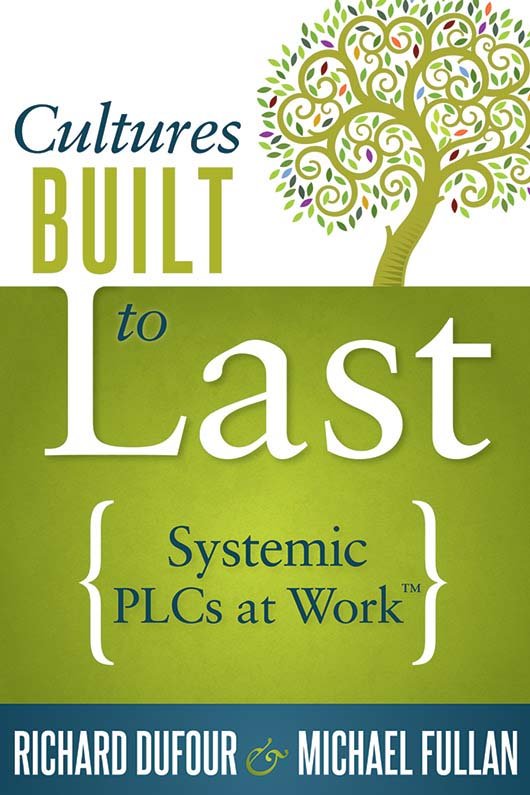 I’ve been thinking and reading a lot recently about school culture. When I imagine culture, I visualize the “buzz” one feels when first entering a school. Are you energized? Depressed? Confused? Are you greeted by smiling students and adults? Is there student work on the wall? Are the hallways clean?
I’ve been thinking and reading a lot recently about school culture. When I imagine culture, I visualize the “buzz” one feels when first entering a school. Are you energized? Depressed? Confused? Are you greeted by smiling students and adults? Is there student work on the wall? Are the hallways clean?
Certainly, culture encompasses much more than those details. But these first impressions provide clues to the observer about what the school values and whether or not adults and students are excited to be there and are learning together.
The headline I’ve chosen for this post is really a consensus quote – every resource I share here conveys this same message: It’s critical to get school culture right.
Culture Is Key
Most of the resources we use in our networks emphasize the importance of a healthy collaborative culture. In fact, one book we used several years ago in the Key Leaders Network is titled Cultures Built to Last: Systemic PLCs at Work, by Rick DuFour and Michael Fullan.
In Cultures Built to Last, both authors remind readers that culture trumps structure every time. Their shorthand definition of culture is “the way we do things around here” (p. 2). As I thought about that quote and about my informal definition, I realized that culture is not about a mission statement or vision or someone describing their school culture. It’s about what you observe, feel, and hear when you visit a school.
Changing a Culture Is Hard
So, school culture is undeniably important – but it’s not easy to create or sustain. In fact, Fullan and DuFour underscore the paradox of culture change: “It is absolutely doable, but is undeniably difficult” (p. 2).
 There are many factors at play when a school sets out to improve its culture. First, we’re asking some adults to change their mindset by expecting ongoing collaboration and an openness among all faculty. And, as many veterans of successful culture change note, this can create conflict.
There are many factors at play when a school sets out to improve its culture. First, we’re asking some adults to change their mindset by expecting ongoing collaboration and an openness among all faculty. And, as many veterans of successful culture change note, this can create conflict.
Equally challenging, culture change is multi-faceted and can’t be addressed by simply tweaking around the edges. One change pushes another – it’s really a domino effect.
What’s more, there is no single, perfect school culture. The mix of student needs, personalities, skill sets, and community influences is a bit different in every building. Creating a school culture that is healthy and productive for adults and students often requires a trial and error process, which can be messy and sometimes frustrating.
Last, and certainly not least, sustaining a collaborative culture takes ongoing effort and requires a long-term commitment to continuous improvement – a commitment that can be impacted by changes in leadership, shifting system policies, and events that may be outside a school’s locus of control.
Little wonder, then, that so many education thought leaders have invested time and energy exploring the school culture paradox.
Pitfalls, Paradoxes, and Promises
Terrence Deal and Kent Peterson have written several books on culture. The one I picked up while writing this blog is titled Shaping School Culture: Pitfalls, Paradoxes, and Promises, Second Edition. The book underscores the pivotal nature of culture by calling on another one of my favorite thinkers, Edgar Schein, who observed:
“…the only thing of real importance that leaders do is create and manage culture…the unique talent of leaders is their ability to work with culture.” (Schein, 1985).
 Deal and Peterson organize their book around what they believe to be the critical elements of culture, in and out of schools:
Deal and Peterson organize their book around what they believe to be the critical elements of culture, in and out of schools:
- Artifacts, architecture, routines, and symbols
- History and lore
- Myth, vision, and values
- Stories and tales
- Rituals
- Ceremonies and traditions
Masters of alliteration, the authors suggest six “C’s” to improving a school culture: convening, conveying, collaborating, conspiring, co-creating, and celebrating (p. 186). Intrigued? There’s a more recent third edition of Shaping School Culture, published in 2016, that’s “updated with current challenges and new solutions,” and (like earlier editions) is full of case studies and strategies that can help advance your school’s culture development.
Regie Routman’s Take on Culture
Not long ago here, I reviewed Literacy Essentials: Engagement, Excellence, and Equity for All Learners by master educator Regie Routman. Although the book has a strong literacy focus, it’s really the culmination of Routman’s career as a teacher, multiple-book author, and professional learning consultant in schools across the USA.
Routman has a good deal to say about culture in her book – you’ll find nearly three dozen entries in the Index and three culture-related appendices. She ranks it among the most powerful ways for a school to become effective across all classrooms and programs.
“After a lifetime of working in diverse schools, I firmly believe that the culture of a school determines its success. The physical, social-emotional, and intellectual environments—which encompass engagement, excellence, and equity—make it possible, or not, to establish and sustain a trusting culture that invites and inspires openness, joyful learning, high achievement, and empowerment.” (p. 40)
As I was putting this post together, I spotted this tweet by Regie:
You can follow her on Twitter @RegieRoutman and if you drop by soon, you’ll spot her two-page self evaluation checklist for “A Healthy and Thriving School Culture.”
Psychological Safety
A true collaborative culture is one in which participants feel free—and safe—to share struggles and questions. It’s also a place where “constructive conflict” is embraced as a way to move forward. But, that culture isn’t possible without trust and a safe environment that allows participants to surface vulnerabilities and ask tough questions.
A recent study by Google found that psychological safety is the more important attribute of effective teams. Google researchers describe psychological safety as the sense that one can “take risks on this team without feeling insecure or embarrassed.” That makes sense to me. If I don’t feel safe in a meeting or in a culture, I’m not going to make myself vulnerable or make an out-of-the-box suggestion.
The study found:
“(T)eams that feel safe are more likely to take risks, admit mistakes, collaborate, or even take on new roles. Feeling as though you are working in a judgment-free space empowers teams, allowing them to benefit from diverse ideas and innovative thinking, increasing their overall effectiveness, and improving collaboration…
It also ensures that employees can ask questions without fear, limiting the chance that they will head off in the wrong direction or operate under an incorrect assumption just because they were reluctant to face the repercussions of speaking up.”
Creating a culture or team where psychological safety is a norm doesn’t happen overnight. Yet, it is so important to a school’s collective ability to successfully address tough issues and successfully improve.
Culturize!
 My most recent read related to this topic is Jimmy Casas’ Culturize: Every Student. Every Day. Whatever it Takes. A Twitter colleague recommended it to me, and I read it with great interest.
My most recent read related to this topic is Jimmy Casas’ Culturize: Every Student. Every Day. Whatever it Takes. A Twitter colleague recommended it to me, and I read it with great interest.
A couple of chapters into the book, I almost felt as if I was reading a long, passionate sermon in favor of creating a culture that puts students first. And, in a way, Casas does sermonize. During his years in education, he served as a teacher, assistant principal, and principal. And, he was inspired to become a teacher because of his negative school experience where he was often viewed as a troublemaker or as being apathetic.
Fortunately, as is often the case, a principal changed his perspective and modeled for Casas the adult person and eventual school leader he wanted to become.
As I read the book, I found myself stopping to tweet meaningful ideas or concepts. Most notably:
“School offices must serve as sanctuaries where people can come to have their spirits boosted, not suppressed.”
and this quote by a HS English teacher about a struggling student…
“Rather than lower expectations, I gave her the tools, support, and desire to climb them.”
And Casas’ observation that…
“Being an excellent educator is, in fact, a gift to our humanity.”
A Useful Self-Assessment
Building on that last quote, Casas speaks to the importance of a student-friendly culture. He offers some questions, which can be converted to a self-assessment (p. 11):
- Does your school have unified expectations throughout your culture regarding how adults treat the students and their families?
- Is there a positive and caring cultural standard regarding the relationships between adults and the students and among the adults themselves?
- Do the practices and policies of your organization point to a student-centered culture rooted in kindness and compassion?
- Do the adults in your school treat students in a manner that positively contributes to your school becoming a community?
- Do the beliefs, attitudes, behaviors, and interactions of your staff with students and with each other scream, ‘I care about you!’ ‘You can do better!’, and ‘You are important to me!’?
These four books—and many others—all address school culture, but approach it from different angles. As you think about your professional reading list for this new school year, you might want to add one or more of these books to your list or, like me, return to them for a refresher.
As Michael Fullan reminds us – we can work all day to create structures for learning, but if we don’t work on our culture, it could all be for naught.
Another ABPC resource: Earlier this year I reviewed The Culture Code, Daniel Coyle’s latest book about creating highly successful groups. You’ll find some carry-over ideas there, too!


0 Comments on "“If You Don’t Get School Culture Right, Nothing Else Will Matter.”"